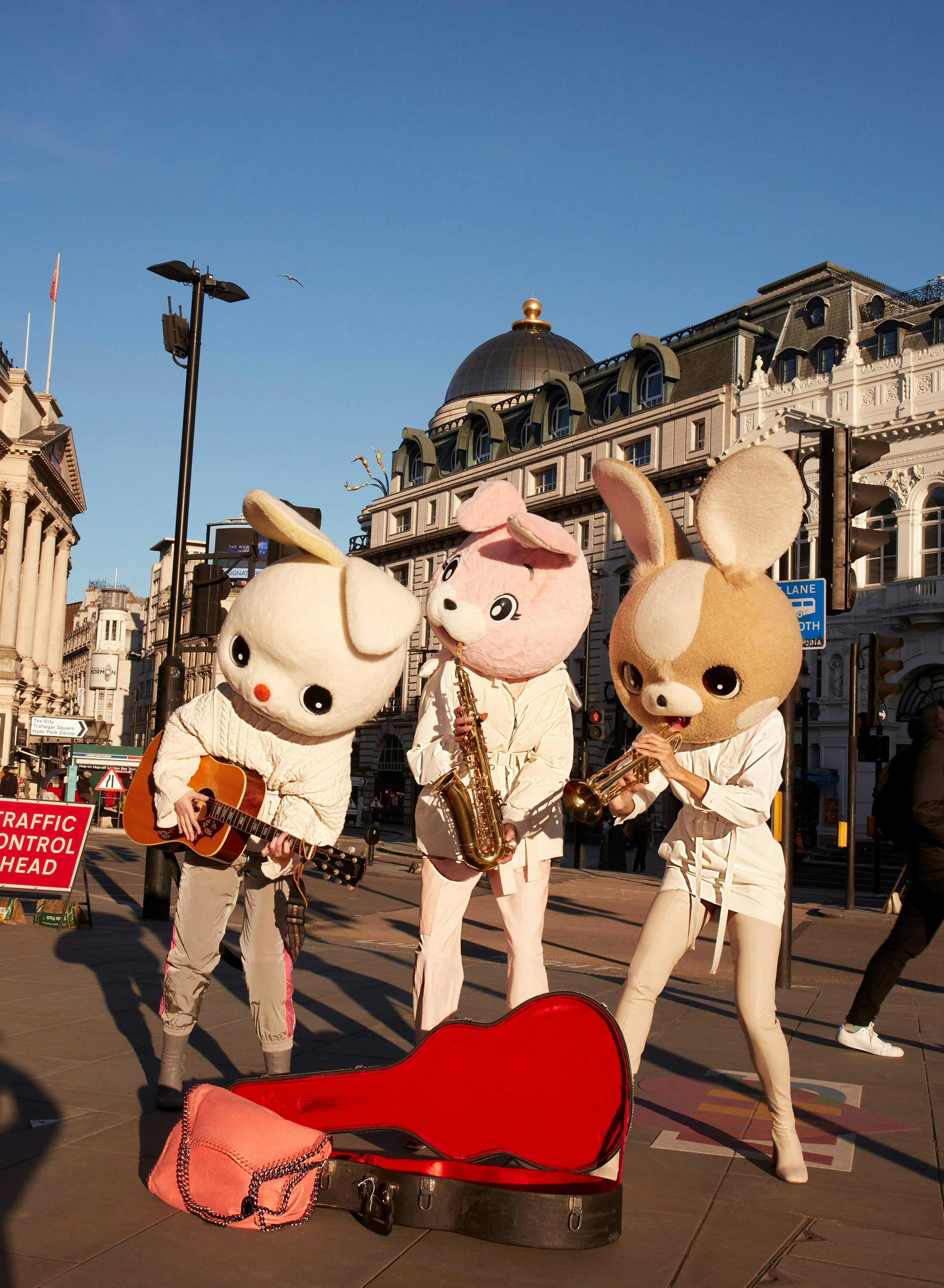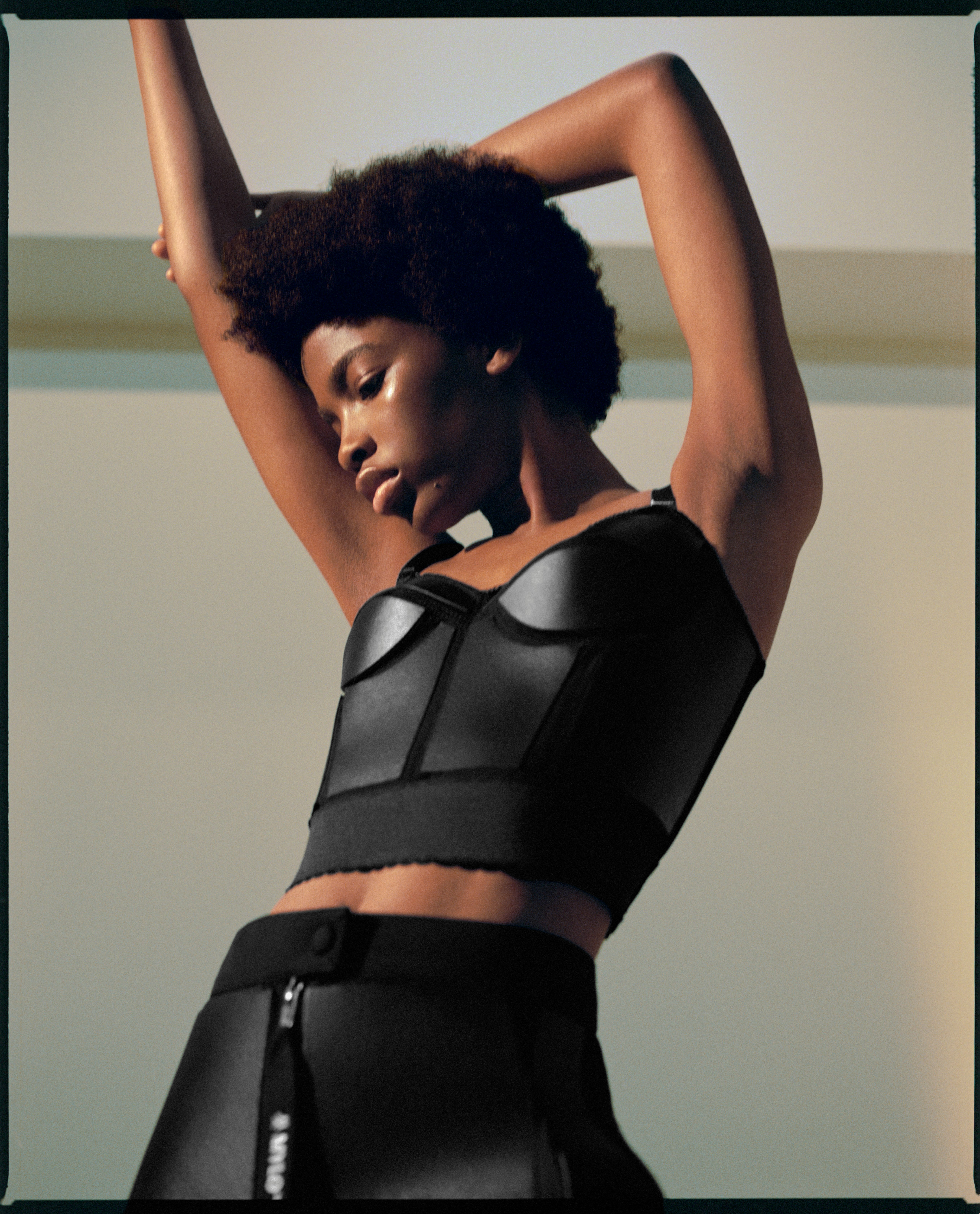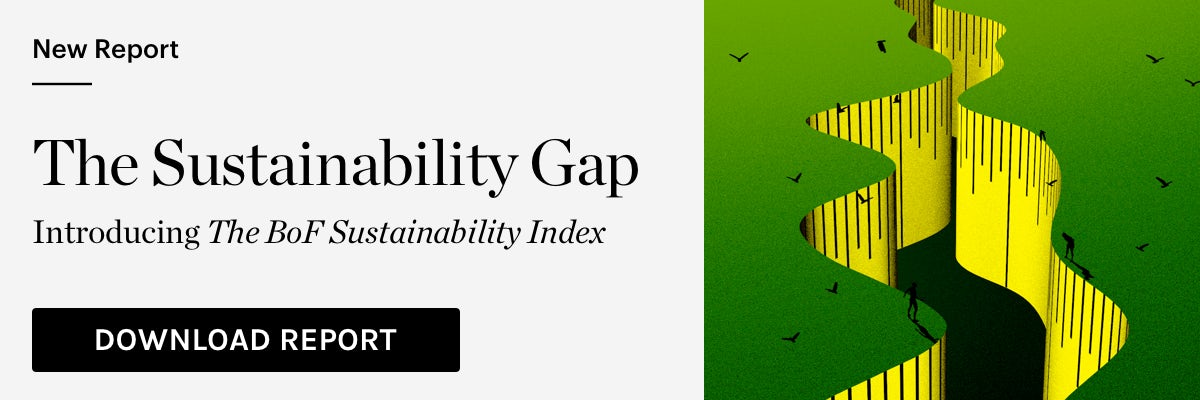Can Stella McCartney Clean Up Fashion? | BoF Professional, News & Analysis
“We are literally getting away with murder,” Stella McCartney said through her computer screen. A week earlier, she’d delivered this message to a group of the world’s most powerful leaders at the G7 summit in Cornwall, England.
The designer’s pitch was simple: government regulators and policy-makers need to stop giving fashion a pass. Instead, they should treat it like the automotive sector or any other big, heavily polluting industry, with tougher oversight and stronger incentives to reduce environmental impact.
“There needs to be policies set in place to police our industry,” McCartney said. “Certainly the industry has fallen short … left to its own devices.”
The call for tougher oversight is rare in an industry that has resisted greater regulation for decades, even as it has begun to confront its impact on the planet and the workers who produce its clothes. And it comes at a pivotal moment for both the designer and the industry.
The next decade is considered critical to tackle the global climate crisis. Fashion is a significant contributor to the problem. Estimates peg the industry’s greenhouse gas emissions at between 4 and 10 percent of the global total, giving the sector the dubious distinction of ranking among the world’s top polluters. And in recent years, consumers, investors and policymakers alike have ratcheted up their calls for reform.
Fashion has responded to the mounting pressure with a growing roster of high-profile, but non-binding commitments to tackle the industry’s ills. The last time a fashion executive made a high-profile appearance before the G7 was in 2019, when Kering chief executive François-Henri Pinault presented the Fashion Pact, a voluntary set of climate commitments supported by dozens of brands from Chanel to H&M Group.
I’m a firm believer of infiltrating from within.
“We aren’t about regulations, we aren’t about legislation,” Kering sustainability chief Marie-Claire Daveu said in a press briefing at the time. “In fashion, the best ‘police officer’ is not the state, but it is the consumer.” Kering said it believes both regulation and industry initiatives are needed to shift the sector.
Meanwhile, McCartney has traded in a long-standing partnership with Kering for one with arch-rival LVMH. The 2018 split from Kering was costly and her brand — whose commercial success has always been one of the most persuasive elements of her advocacy — has been working to return to profitability.
Along with taking a minority stake in her label in 2019, LVMH named McCartney an advisor on sustainability, giving her responsibility for transforming an industry giant that has lagged peers and remained aloof from industry initiatives. (The company disputed this characterisation). LVMH chief executive Bernard Arnault has pointed to the company’s relationship with McCartney as a sign of the group’s commitment to sustainability.
“I think Bernard Arnault investing in my brand and having me as his personal advisor in sustainability sent out a very, very strong message of support,” McCartney said. “I’m a firm believer of infiltrating from within.”
The designer is speaking over Zoom, casually curled up in an armchair wearing a teal jumpsuit made from recycled plastic, though she makes a point of noting that you wouldn’t guess it. (“I’ve always said at Stella McCartney, you shouldn’t sacrifice anything on style and desirability. You shouldn’t know that this is 100 percent recycled plastic bottles and fishing nets.”)
Stella McCartney’s latest campaign supported the Humane Society International’s petition to end the fur trade in the UK. Stella McCartney.
McCartney has been an insurgent voice in fashion for two decades now, deftly navigating the industry’s upper echelons while subverting many of its norms. She’s the consummate insider’s outsider, able to throw stones and push boundaries because she had powerful backing, an impeccable network (her father is Paul McCartney), and real design talent. She’s also stubbornly and consistently refused to compromise her principles to conform to the industry’s standards.
McCartney’s brand, which launched in 2001 as a joint venture with what was then the Gucci Group, used no fur, feathers or leather from day one. It was a huge risk: leather goods, particularly handbags, are a major revenue driver for most luxury labels, and twenty years ago the idea shoppers would pay luxury prices for alternative materials was widely dismissed. Today, the approach is fashionable, as are the environmental initiatives she’s championed and embedded in her brand.
“This has added value for our brand now,” McCartney said. “It used to be ridiculed, it used to be mocked. It used to be completely misunderstood and the most out-of-box, bizarre thinking.”
When we speak, she’s just launched her latest collection alongside a new campaign that promotes the Humane Society International’s efforts to end the fur trade.
Within weeks, outerwear brands Canada Goose and Moose Knuckles announced they would drop fur from their collections and Neiman Marcus said it was going fur free. The companies have all faced years of pressure from animal rights groups and are responding to broader shifts in consumer sentiment and digital activism, but the moves are still a quiet triumph for McCartney.
The Risk Taker
In the mid-2000s Barneys fashion director Julie Gilhart was hunting for a designer to create an eco-collection for the legendary department store. It would be at least another decade before sustainability became an industry buzzword and green fashion’s reputation as frumpy, unstylish and niche had yet to be shaken.
“We went to a lot of named designers, and most were very open to talking to us because we were Barneys and could write orders and create business, but this one was a very difficult one,” said Gilhart, now chief development officer at brand development platform Tomorrow Ltd and president of its advisory arm, Tomorrow Projects. “Very few designers felt like, number one: they could grasp the concept. Number two: do the concept. And number three: be successful at it.”
It took someone like her who had credibility and didn’t have to do it to really create a space for others to follow.
But McCartney, supported by Marco Bizzarri (then her brand’s president and now Gucci’s chief executive), took on the challenge. It was a couple of years after Al Gore’s climate change documentary “An Inconvenient Truth” pushed the topic into mainstream awareness, but the fashion industry had yet to come to grips with the gritty and technical details of its role in the crisis. McCartney, who until then had focused her brand on addressing animal cruelty, carved out a budget for the project and set her team to research better materials. After designing the Barneys capsule using organic cotton, McCartney switched her whole line to the material, a sourcing decision that’s still progressive today.
She “did the work, [despite] the non-sexiness of it [for] a brand that is living in the fashion realm, where just everything has got to be luxurious and on trend,” Gilhart said. “It took someone like her who had credibility and didn’t have to do it to really create a space for others to follow. And very few designers were willing to take that risk.”
Over the last decade the designer has consistently led the way in adopting new materials and seeking out solutions to some of fashion’s gnarliest environmental problems. The brand was early to embrace recycled and upcycled materials, from polyester to cashmere, and to switch up its viscose supply chain to ensure the silky, wood-based material did not originate in endangered forests. It’s punched above its weight in material innovation testing out materials like synthetic fur and mushroom-based leather. And it leaned into resale when most of the luxury market was still eyeing the channel with distrust, partnering with The RealReal in 2018, the same year Chanel launched legal action against the luxury resale site.
At each step, where McCartney led, others followed.
Prada has committed to only use recycled material for its iconic nylon bags by the end of this year. Burberry and Gucci have both worked with The RealReal, partnerships the resale site’s senior director for strategic initiatives, Allison Sommer, acknowledges probably wouldn’t have happened if McCartney hadn’t done it first. Gucci-parent Kering took a 5 percent stake in Paris-based resale platform Vestiaire Collective earlier this year. Hermès is set to bring out a bag made from a lab-grown leather substitute. More than half of the world’s viscose production is now considered low risk by environmental organisation Canopy, which works with fashion brands to eliminate sourcing from ancient and endangered forests. Fashion’s biggest luxury groups, Kering and LVMH, both joined the initiative because of McCartney, founder and executive director Nicole Rycroft said.
To be sure, McCartney has not operated in a vacuum. The designer has benefited from working with many nonprofits and other brands focused on the same issues. Former partner Kering was also early to embrace sustainability, offering expertise and resources that enabled McCartney and her team to pursue innovative materials and ways of operating that other brands its size couldn’t access. The industry more broadly has responded to a powerful shift in consumer sentiment that has helped propel sustainability into the mainstream.
Stella McCartney has embraced new materials like the leather alternative Mylo. Stella McCartney.
But the designer has proved a powerful force, willing to take risks and experiment while maintaining the elevated tailoring and design that made her brand popular. To many, she proved sustainability could be luxurious and helped give it mainstream clout through her long-standing partnership with Adidas.
Even the sportswear brand, with its deep pockets and sophisticated research and development capabilities said McCartney has pushed it to try new things.
“Working with Stella means no stone left unturned. She constantly looks at every opportunity to innovate and push the industry forward,” said Aimee Arana, global senior vice president for sportswear and training at Adidas. “Stella really does take us to right there on the cutting edge.”
McCartney’s as surprised as anyone else about the industry’s transformation: “You can’t walk into a room with a business model in any industry now and not have sustainability be one part of it. You can’t start a fashion brand today without that, you’re so irrelevant, you’re like the most unfashionable. Now that is a fucking miracle.”
Growing Pains
But while the brand’s principles have become increasingly mainstream, business has struggled.
The company’s 2018 split from Kering was a costly uncoupling that saddled the brand with hefty administrative expenses. It came amid a wider streamlining of the Kering portfolio, as the group shed non-core brands like Christopher Kane and Puma to focus on luxury mega-labels like Gucci, Saint Laurent and Balenciaga. Though Stella McCartney had performed respectably, with revenue in the hundreds of millions, it hadn’t demonstrated the growth potential to really move the needle for Kering. McCartney is said to have felt a lack of attention from the group’s senior leadership.
The split was followed by an executive exodus at the brand, gutting its senior ranks. Long-standing chief executive Frederick Lukoff and chief marketing officer Stephane Jaspar both left in 2019. Sustainability chief Claire Bergkamp, who spearheaded the company’s efforts for nearly a decade, departed last year.
The brand “had to be rebuilt from scratch,” said current chief executive Gabriele Maggio, who joined the company from Moschino in 2019. Sales fell 9 percent in 2019 and were expected to keep declining in 2020 as the pandemic hampered turnaround plans, according to accounts filed with the UK’s Companies House. The company recorded a loss of €17 million ($20 million) between March and December 2019, the last period for which results are available.
You can’t walk into a room with a business model in any industry now and not have sustainability be one part of it.
Maggio has put in place a three year plan to return to profitability, leaning on McCartney’s reputation as a campaigner and the growing appetite for conscious consumption.
“We’re in a very strong moment of change in the direction that Stella has been leading for a long time, so we cannot lose market share and relevance,” Maggio said. The road back to profitability will be balanced against investment opportunities that could help the brand maintain its position, he added. “We are continuing to invest to maintain the level of innovation and sustainability in the company, and we don’t want to lose this investment only to reach a profitable P&L tomorrow.”
The brand is also back in the supportive embrace of one of fashion’s luxury juggernauts, following LVMH’s acquisition of a minority stake in 2019. The deal stands as one of fashion’s great corporate plot twists, marking an unusual pass the parcel between two of fashion’s most powerful groups. It repositioned McCartney from the head of a small activist brand to a face of sustainable transformation at LVMH.
Though the group has had an environmental programme in place for decades, it’s come under fire in the past for lagging peers like Kering, which has been a vocal champion for sustainability. LVMH ranked among the five lowest scoring brands in the BoF Sustainability Index, which benchmarked 15 of fashion’s biggest companies on their sustainability performance. Kering came out on top.
McCartney’s debut as the group’s advisor came at an event where Arnault dismissed teenage climate activist Greta Thunberg as “demoralising” and LVMH scion Antoine Arnault dismissed the Kering-led Fashion Pact. “We prefer acts to pacts,” the younger Arnault said at the time.
McCartney remains a signatory to the agreement. LVMH still has not joined. The company pointed to updated climate targets published earlier this year, after it completed a strategy put in place in 2013. “We had to finish what we had started,” a spokesperson said. The new commitments align more closely with industry leaders, setting science-based emissions targets for the first time, deepening ambitions to improve raw material sourcing and exploring circular business models like resale.
McCartney has started to drive incremental changes through collaborations with the group’s other holdings, but won’t be drawn on details. “There’s a lot of projects that we’re working on,” she said, before pausing to check what’s already public and pointing to a platform the group launched earlier this year to sell deadstock fabrics. LVMH is “much further ahead” thanks to her involvement, a spokesperson said.
Infiltrating From Within
Whether McCartney can drive transformative change from within the fashion industry remains an open question. Shifting the industry’s business model to align with global sustainability goals in the next decade will require major investment and a wholesale shift in the way fashion operates.
Real transformation will be difficult, if not impossible, without fundamentally challenging fashion’s growth-focused business model. That’s a hard sell for a designer who now represents one of the industry’s biggest businesses.
The industry itself has no commonly agreed set of best practices and is engaged in a number of heated debates over the materials, business models and processes that are really going to have the most positive environmental impact.
Some of McCartney’s decisions have drawn criticism too. While she’s sought out replacements for leather and fur, many alternative materials are essentially plastic. Polyester and nylon made up 11 percent of the brand’s ready to wear offering in 2019, making them the company’s third-most common material. McCartney has actively sought out alternatives, like recycled polyester and bio-based faux fur.
I run a business that practices what it preaches; we’re not perfect.
“I run a business that practices what it preaches; we’re not perfect,” McCartney said. The company’s latest collection is made up of 80 percent more sustainable material. “It’s the highest number I’ve ever achieved, but it wasn’t easy getting there,” she added.
That’s where the push for regulation comes in. Rules that give the industry clear standards, support recycling and incentivise designers to use better materials could be transformative, McCartney says. At present, just using leather alternatives takes up to 30 percent out of the brand’s margin for every US sale because of the way the country’s import taxes are structured.
But the designer is still defining the exact policy changes she would like to see. Following on from the G7, she’s working with 15 brands in a fashion task force convened by the Prince of Wales’ Sustainable Markets Initiative. It’s yet another industry coalition that must prove it can have an impact. The group will outline its action plan later this year.
Successfully navigating the line between campaigning and commerce may prove to be the most powerful tool in McCartney’s arsenal.
“What I hope to do is show that you can still make money,” McCartney said. “I don’t think the world is going to fall apart if we can replace bad business with good business. I actually think we’re going to be okay.”
Disclosure: LVMH is part of a group of investors who, together, hold a minority interest in The Business of Fashion. All investors have signed shareholders’ documentation guaranteeing BoF’s complete editorial independence.
Related Articles:
LVMH Gets Competitive About Sustainability
Will Self-Regulation Solve Fashion’s Sustainability Problem?
How Fashion’s Sustainability Targets Measure Up
The inaugural BoF Sustainability Index benchmarks the performance of fashion’s largest companies against ambitious environmental and social goals that must be achieved in the next decade.
Download the full report ‘The Sustainability Gap’ here.
The BoF Professional Summit: Closing Fashion’s Sustainability Gap
On April 14 2021, BoF will convene leading sustainability experts and global thought leaders for a 3-hour live broadcast
of interactive conversations and panel discussions, in which we’ll unpack findings from The BoF Sustainability Index and
outline the steps that need to be taken over the coming decade to align the industry with global climate goals and social
imperatives. Space is limited.
As a BoF Professional member,
register now to reserve your spot.
If you are not a member, you can
take advantage of our 30-day trial
to experience all of the benefits of a
BoF Professional membership, including the Summit.



